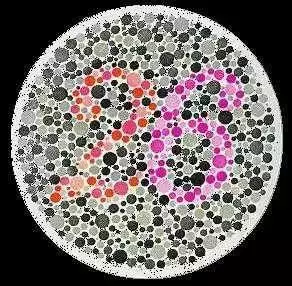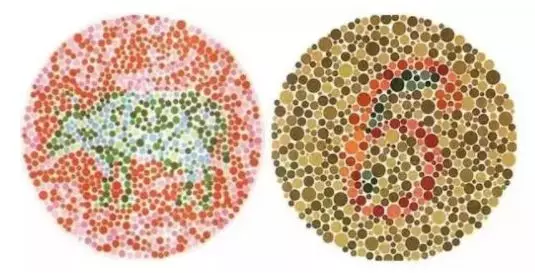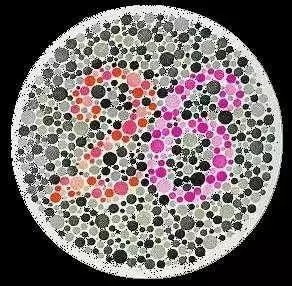The discovery of color blindness originated from a pair of socks ..
Dalton, a famous chemist and physicist in 18th century England, bought a gift for his mother on Christmas Eve – a pair of “brown gray” socks. After seeing the socks, the mother felt that the color was too bright, so she said to Dalton, “How should I wear these cherry red socks that you bought?” Dalton felt very strange. The socks were clearly brown gray, why did the mother say they were cherry red?
Dalton, puzzled, went to ask his younger brother and the people around him. Except for his brother who shared his opinion, everyone else who was asked said that the socks were cherry red. Dalton did not easily let go of this small matter. After careful analysis and comparison, he found that his and his brother’s color vision were different from others. It turned out that he and his brother were both color blind.
Although Dalton was not a biologist or medical expert, he became the first person to discover color blindness and the first color blindness patient to be discovered. He wrote a paper titled ‘On Color blindness’ and became the first person in the world to raise the issue of color blindness. Later, in memory of him, color blindness was also known as Dalton’s disease.
What is color blindness? Why do color blind patients see different colors? How to treat color blindness?
What is color blindness?
Color blindness refers to the inability to distinguish between various colors or a certain color in the natural spectrum. It is divided into total color blindness and partial color blindness. Among partial color blindness, red green color blindness is the most common. Many people’s understanding of red green color blindness comes from the fact that “red green color blindness patients cannot take a driver’s license”. Next, through specific tests, we will learn about color blindness together.
Normal person: 12
Color blind patients: unable to see words

Normal person: 26

Red blind patients: 6
Green blind patients: 2
Color blindness: unable to see numbers

Left image:
Red blind patient: Purple line
Green blind patients: red line
Normal people can see it all
Right picture:
Red blind patients: 6
Green blind patients: 2
Normal person: 26

Left image:
Normal person: a pattern of a “cow”
Color blind patient: a pattern of a ‘deer’
Right picture:
Normal person: 6
Red green color blind patients: 5
Color blind patients: unable to see numbers
So, in simple terms, color blindness refers to the inability to distinguish various colors or a certain color in the natural spectrum. So, what causes color blindness?
Reasons for color blindness
The causes of color blindness can be divided into two types: congenital color blindness and acquired color blindness
Congenital color blindness: Red green color blindness is a sex linked recessive genetic disease, and cone cell malnutrition is all autosomal recessive inherited. The vast majority of people in clinical practice belong to congenital color blindness.
Acquired color blindness: can be caused by diseases of the macula, retina, optic nerve, and occipital cortex, or by drug poisoning.
Congenital color blindness is difficult to treat due to genetic influence; Acquired color blindness is mainly influenced by other factors, and by addressing these external factors, it may be possible to improve it.
The causes of acquired color blindness can be roughly divided into the following four types:
- Macular degeneration of retina
The age-related degeneration of the macular spot in the retina can cause changes in color vision. Age related macular degeneration usually damages central vision. Early symptoms are often not obvious in patients, but in late stages, when central vision is damaged, objects in the central area of the field of view may deform, and even central blind spots may appear. In China, wet age-related macular degeneration patients account for the vast majority.
- Cataract
Cataracts block certain types of light and affect color vision, especially dark gray, dark blue, and dark green, which are often difficult to distinguish clearly.
- Retinal or optic nerve injury or lesion
The onset of retinitis pigmentosa is related to genetic variations. The main symptoms are night blindness, progressive visual impairment, and narrowing of the field of vision. Patients with narrowed vision can see the scenery in front of them, but they cannot see the slightly left or right view. Patients are no different from ordinary people in the early stages of illness, but as the condition worsens, their vision mostly gradually disappears.
If there is a sharp decline in vision in a short period of time, pain during eye movement, visual field defects, and inability to distinguish colors, it may be due to inflammation of the optic nerve.
- Drug induced color vision abnormalities
Taking digitalis, which is used to treat heart disease, can cause blue vision.
Except for retinal degeneration caused by retinitis pigmentosa, there is currently no cure available for all other conditions
- Macular degeneration of retina
For age-related macular degeneration caused by inflammation, steroid drugs can be used to inhibit it, while advocating a healthy lifestyle such as low-fat diet, smoking cessation, and taking some antioxidant supplements to reduce the risk of developing the disease.
In addition, wet age-related macular degeneration can also be treated with photodynamic therapy, intravitreal injection of anti vascular endothelial growth factor, and other methods.
- Cataract
The decrease in color vision caused by cataracts can be surgically removed, and wearing “colored contact lenses” may help distinguish colors.
- Inflammation of the optic nerve
Optic neuritis usually has complex causes and is difficult to diagnose. However, if detected early and treated appropriately, it may not only achieve better visual recovery, but also reduce the chance of developing sequelae.
So when you suspect that you may have optic neuritis, you must seek medical treatment promptly to avoid delaying the timing of treatment.
But patients should not self diagnose and treat based on symptoms. They must go to the hospital for specific examinations to identify the cause of the disease before prescribing the right medicine.
Daily care for color blind patients
- Installing color filter lenses on glasses or wearing colored contact lenses can improve the contrast vision ability of color blind patients.
- Since color blindness is a hereditary disease that can be passed on to future generations, it is an effective means of prevention to avoid close marriage and to investigate the genetic history of the other family before marriage, and to take timely measures to reduce the birth rate of color blindness offspring.
